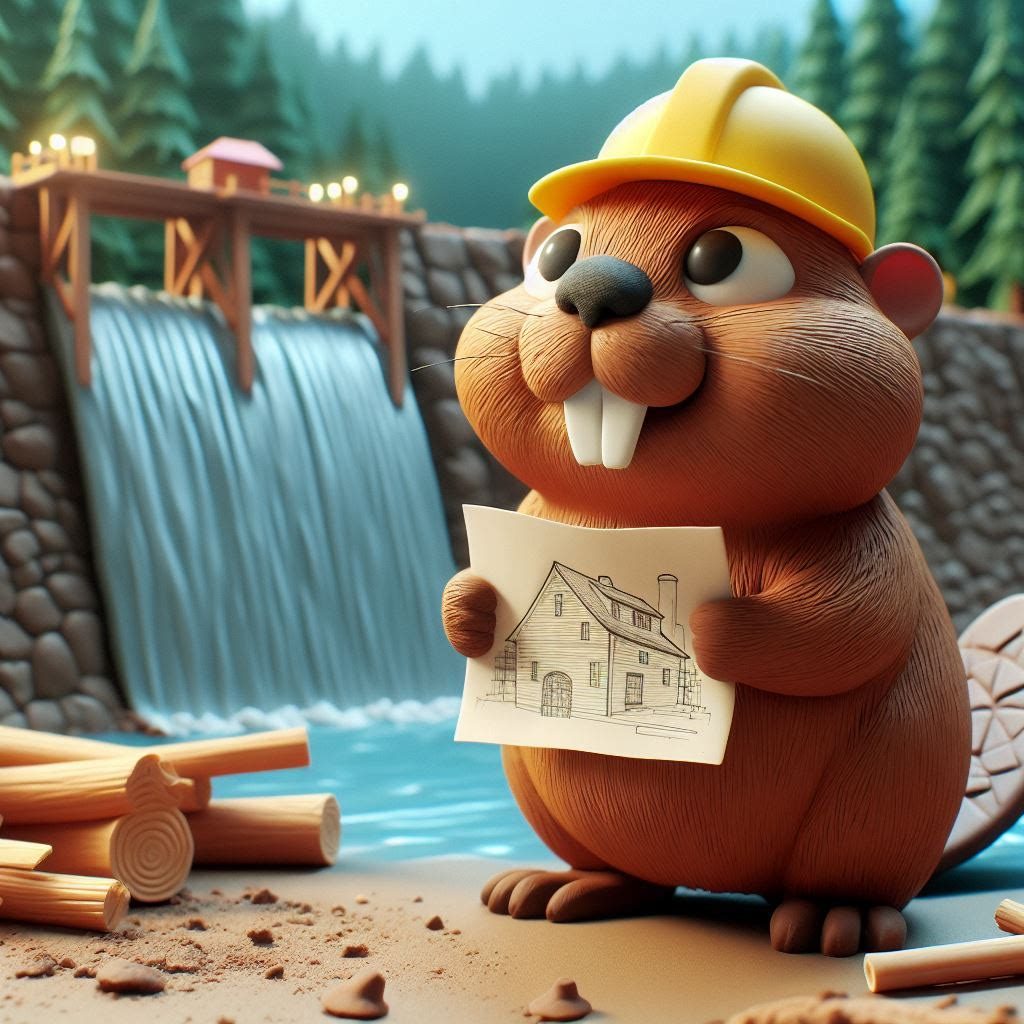Beaver Are Nature’s Architects
Introduction
Beavers, those industrious aquatic mammals, are renowned for their remarkable engineering skills. Their ability to construct intricate dams has fascinated scientists and nature enthusiasts alike. In this article, we’ll explore the fascinating world of beaver dams, their ecological significance, and the challenges they sometimes pose.
Why Do Beavers Build Dams?
Beavers have a built in knowledge when it comes to how they build their dams using a combination of basic animal instincts and learned skills which makes a big combination as it is not basic. Let’s delve into the reasons behind their impressive construction efforts:
Creating a Home: Beavers build dams primarily to create beaver ponds, which serve as both their homes and food sources. These cozy lodges provide shelter and safety for beaver families.
Slowing Water Flow: By constructing dams, beavers slow down the flow of water in rivers and streams. As they pile up logs, sticks, and mud, they create a watertight barrier. This results in a section of deeper water behind the dam.
Wetland Creation: Beaver dams transform the landscape by creating wetlands. These lush environments attract a variety of wildlife, including fish, ducks, frogs, and other creatures. Wetlands also act as natural filters, trapping sediment and toxins before they flow into streams and oceans.
The Good and the Bad
Beaver dams play a pivotal role in nature, but they can also cause challenges:
Benefits:
Biodiversity: Wetlands created by beaver dams host numerous animal species.
Water Absorption: Wetlands absorb excess water, mitigating the effects of heavy rainfall and preventing floods.
Natural Filtration: Beaver dams filter out sediments and toxins, improving water quality downstream.
Challenges:
Flooding: Ironically, beaver dams can cause flooding. This poses risks to farmland, infrastructure, and public safety.
Tree Damage: Beavers’ sharp teeth can chew through valuable trees, impacting timber industries and utility lines.
Beaver Dam Management
Balancing the benefits and challenges of beaver dams requires thoughtful management:
Humane Trapping: Agencies work with landowners to trap and relocate beavers when necessary.
Beaver Pipes: Corrugated plastic pipes inserted into dams help control and prevent flooding.
Pre-Dams: Fences encourage beavers to build in desired locations.
Fencing and Repellants: Specially designed fences and tree repellants keep beavers away from sensitive areas.
In Conclusion
Celebrating Beaver Dams
Beaver dams are more than mere structures; they are the embodiment of nature’s ingenuity. These industrious creatures transform landscapes, creating wetlands that teem with life. As we marvel at their architectural prowess, we must also address the challenges they pose.
Appreciating the Good:
Beaver dams foster biodiversity, providing habitats for countless species.
They act as natural filters, purifying water and safeguarding downstream ecosystems.
Wetlands created by beavers mitigate floods and enhance water quality.
Navigating the Challenges:
Flooding remains a concern, necessitating thoughtful management strategies.
Balancing the needs of humans and beavers requires creativity and compassion.
So, next time you encounter a beaver dam, pause and reflect on the intricate balance it represents. Join the discussion, share your observations, and let’s continue to appreciate these remarkable architects of the wild.
Join the Discussion!
What are your thoughts on beaver dams? Have you seen a beaver or ever observed one in the wild or on tv? Share your experiences and insights in the comments below with us!

















WillievoP
Точно трендовые новинки индустрии.
Исчерпывающие мероприятия лучших подуимов.
Модные дома, лейблы, гедонизм.
Свежее место для трендовых людей.
https://fashionsecret.ru